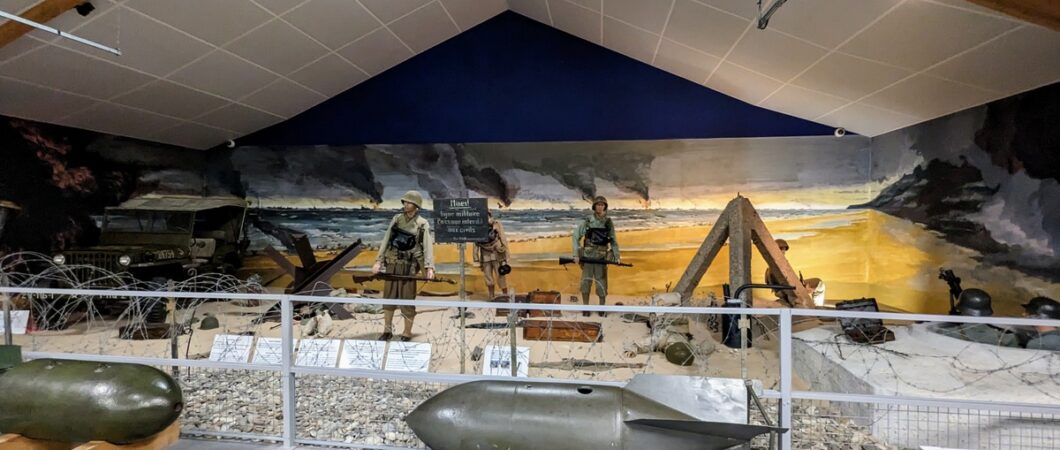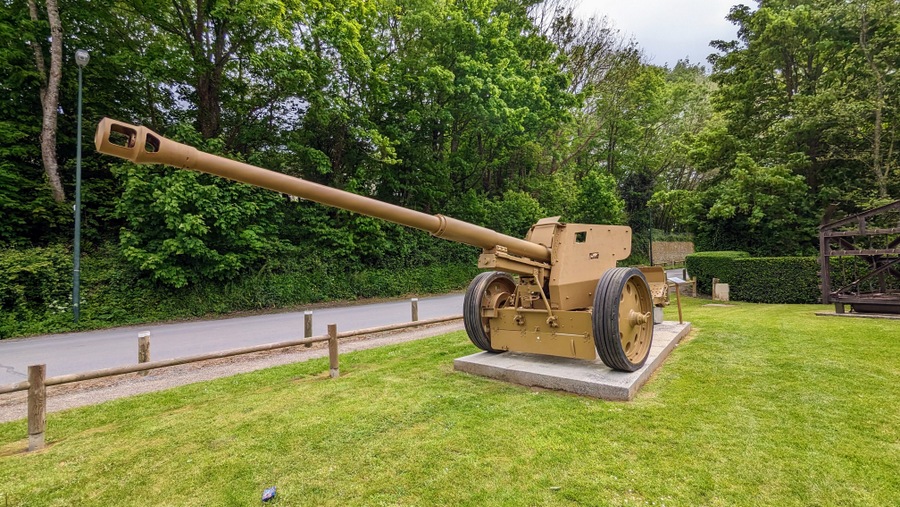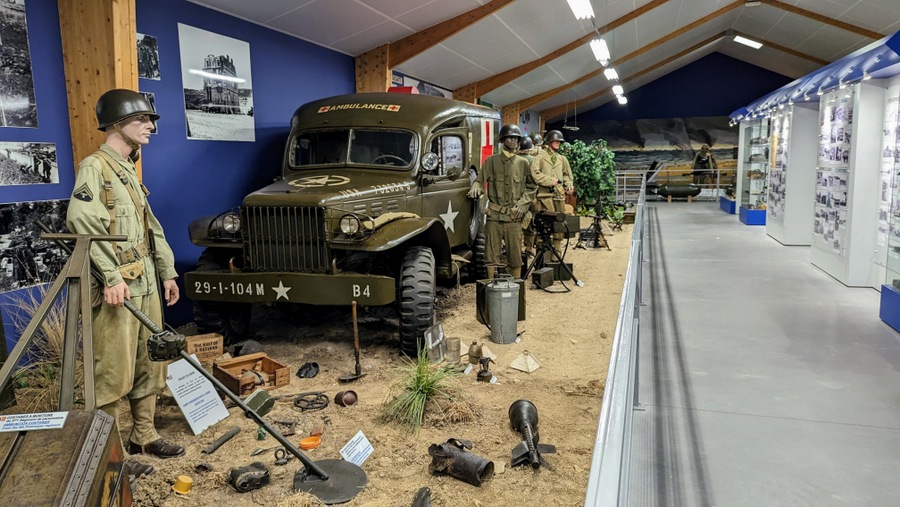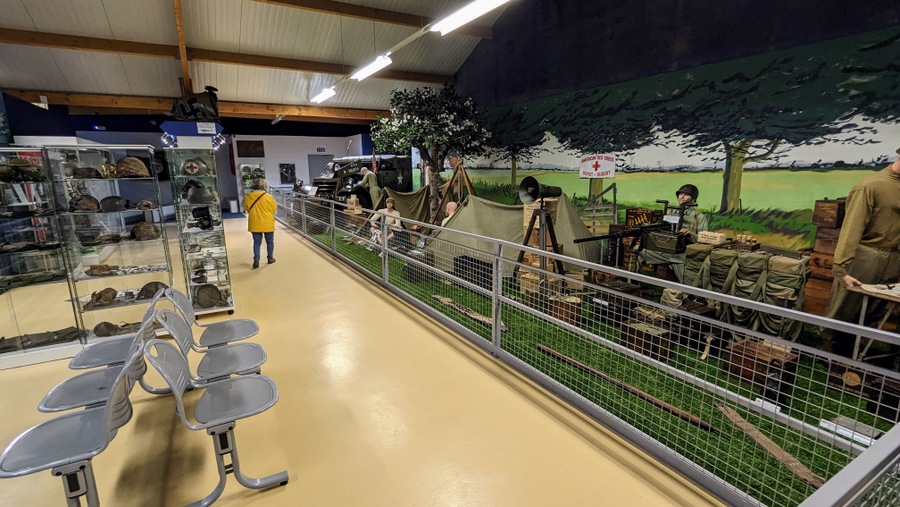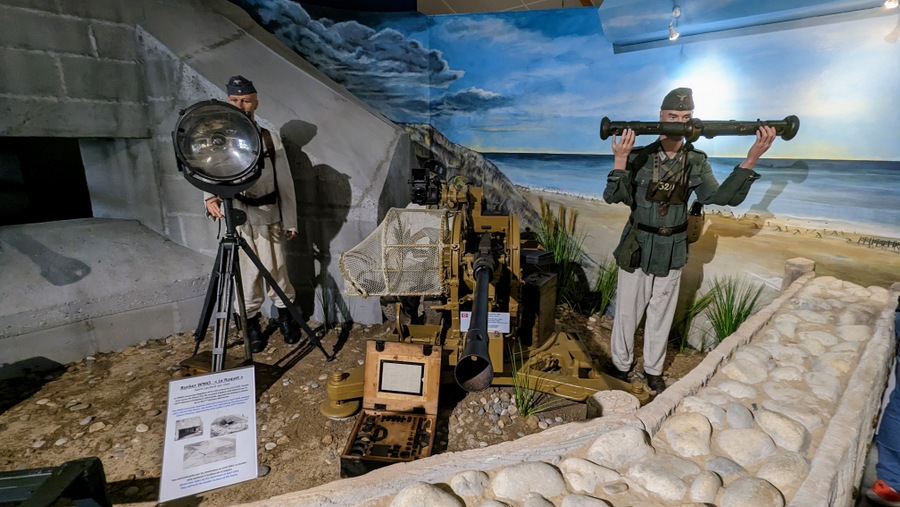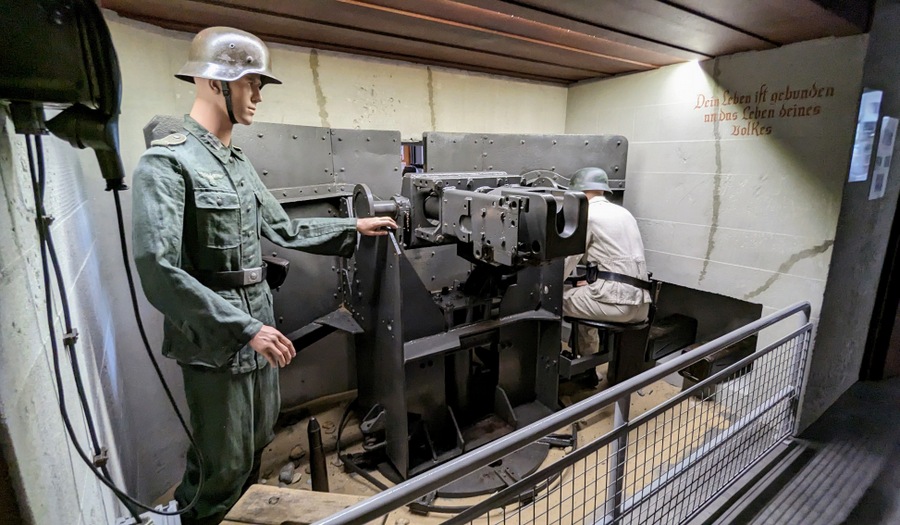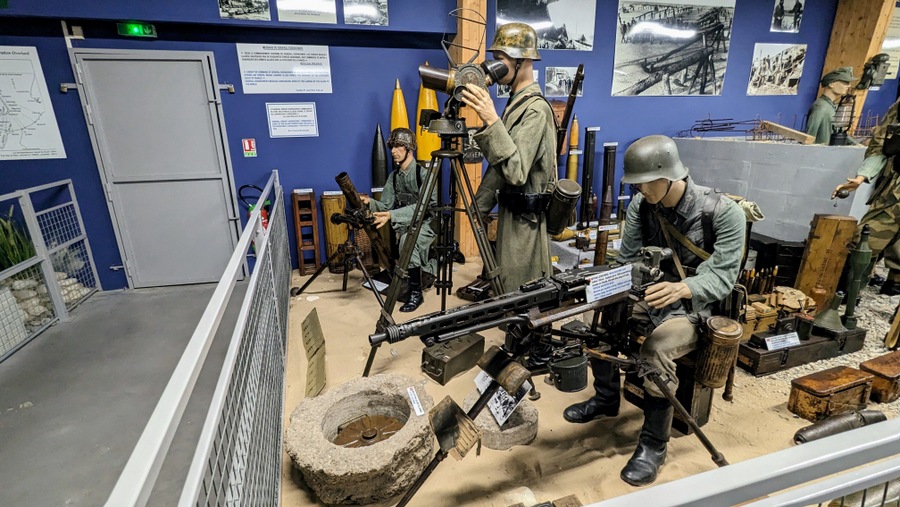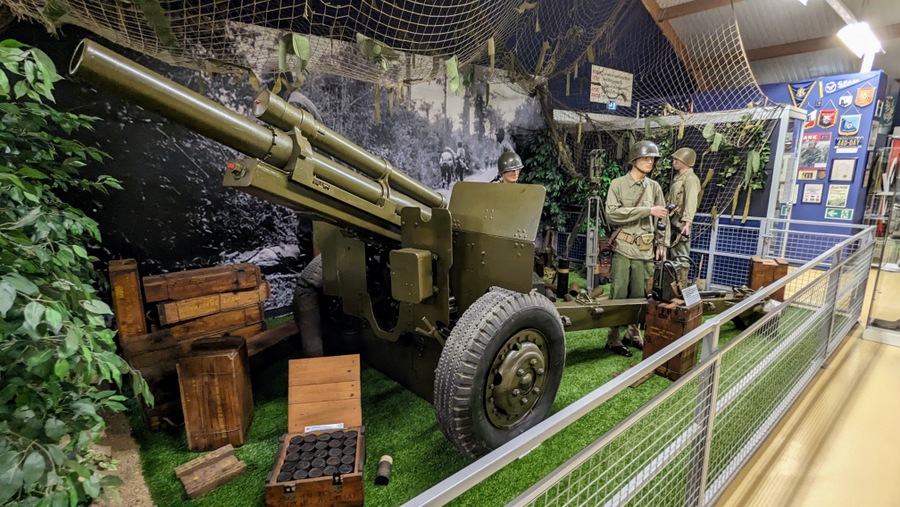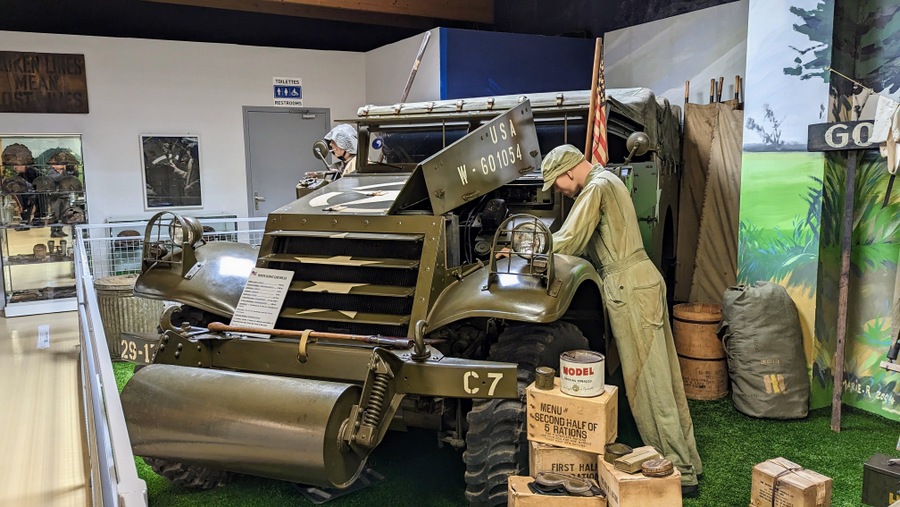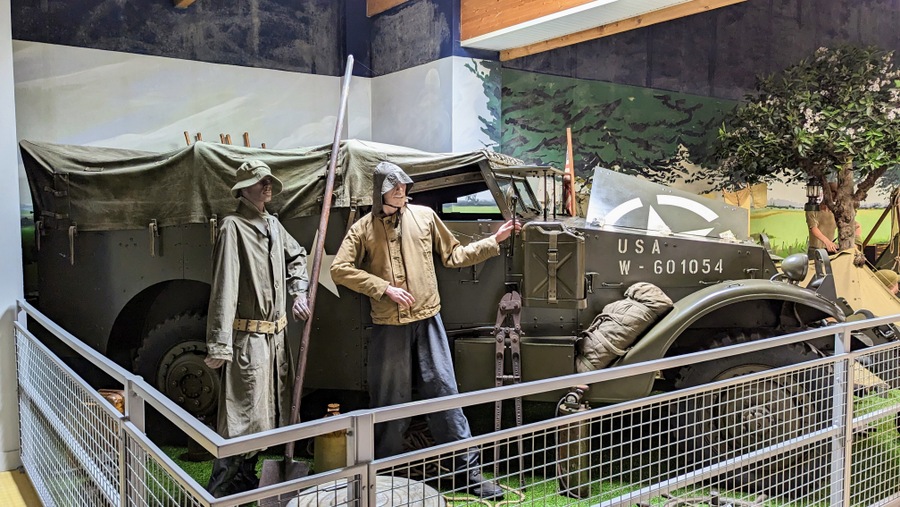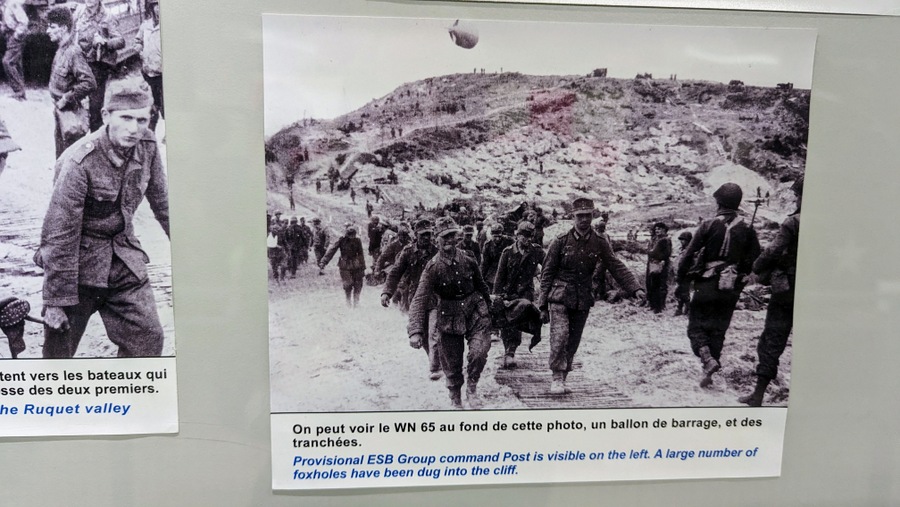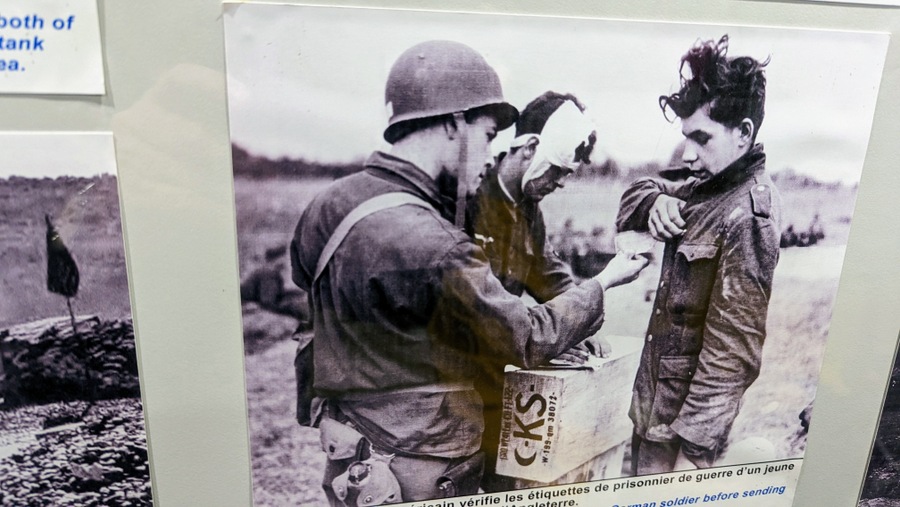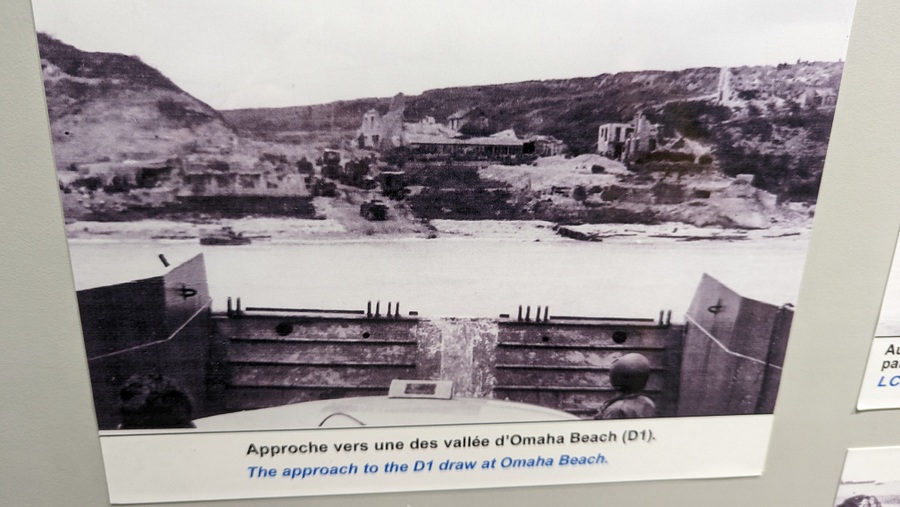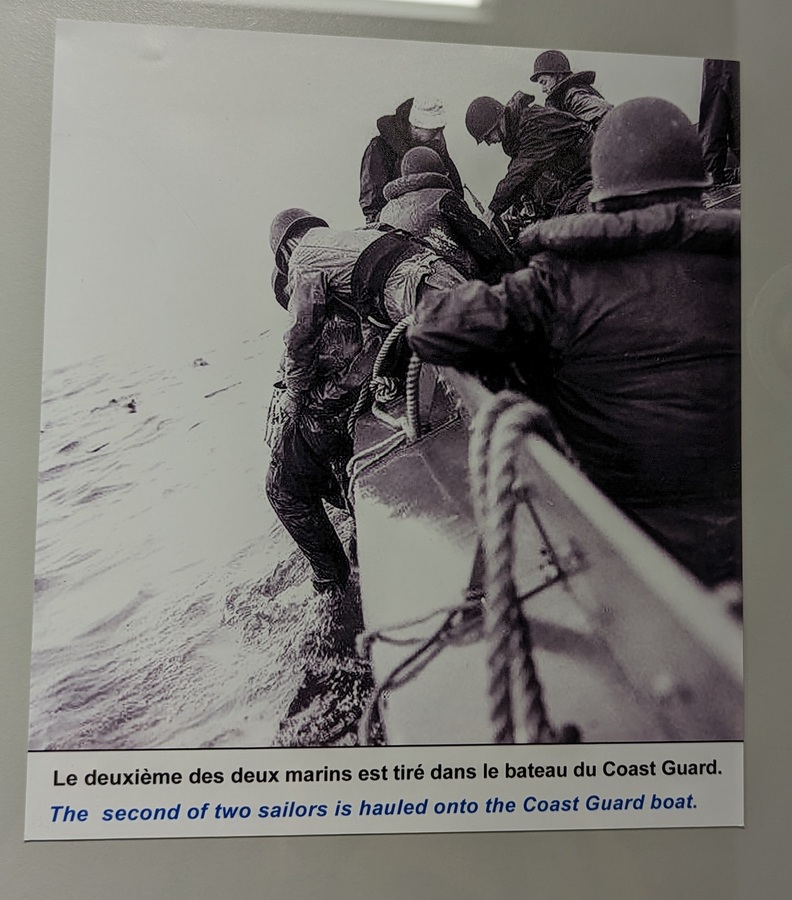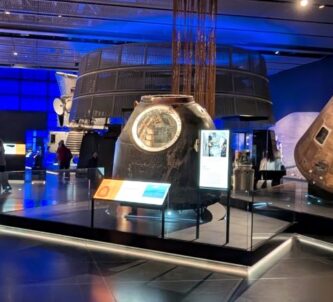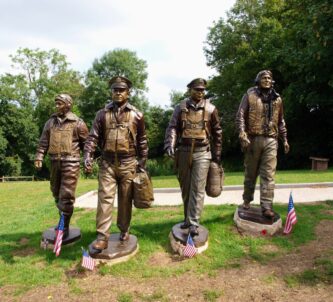The Omaha Beach Memorial Museum (Musée Mémorial d’Omaha Beach), focuses on the D-Day landings at Omaha and Pointe du Hoc.
It’s not a particularly large museum (1400m²) but it is well laid out and has some interesting artefacts, documents and photos. It’s location, halfway up the Les Moulins draw* (the middle of the three draws at Omaha, it leads up to Saint Laurent) also makes it a popular stopping off point for visitors who drive past on the way to or from the Vierville draw along the beach road.
D-Day Normandy Posts
So what’s there? Well, let’s start outside because there are two particularly interesting guns in the car park area…
Outside the Omaha Beach Memorial Museum
I’ve always been fascinated with the U.S. long-range 155mm ‘Long Tom’ ever since I had a diecast metal model of one as a kid! There was one in the Land Warfare hall at IWM Duxford, but Lord knows where that will end up, now they are closing the building. So this is probably the only one on display in Europe, that I’m aware of. If you are aware of another, let me know in the comments.
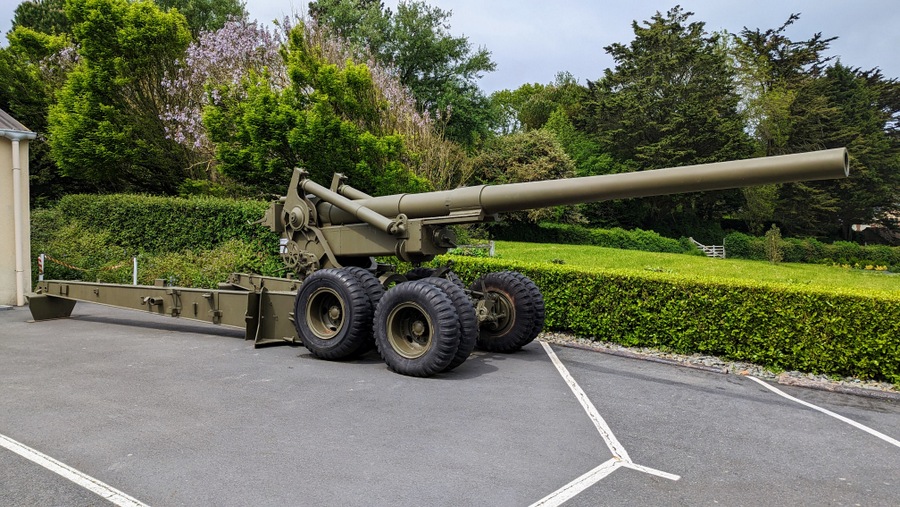
The other big gun, is the terrifyingly powerful German PAK 43 88mm Anti-Tank gun. You really would not want to be in the sights of that beast! Just look at its 6.3m length barrel, that could spit out a shell travelling at 1030 m/s in a near flat trajectory, every 10 seconds! These guns were also installed in Tiger tanks, and more significantly, there was one in the bunker at Widerstandsnest 72 firing along Omaha Beach.
There’s also a Sherman tank and a small WW1 naval gun in the car park.
Inside the Omaha Beach Memorial Museum
The main hall of the L-shaped building has dioramas around the outside and display cabinets with documents and images running down the middle, so the natural route through the museum is down one side of the main hall and back up the other, before returning to the reception and shop area where there are some more exhibits.
The museum also has a small cinema showing a movie covering the events at Omaha as recounted by veterans who were there
Naturally, the dioramas include the beach defences…
… but then they mostly take the form of non-specific scenes/events gathered around vehicles and equipment, for example collections of German and American weaponry.
Some of the exhibited vehicles are worth a second look. Such as the 4-wheel drive M3 A1 scout car. You don’t see them often, despite the fact that the White Motor Company manufactured almost 21,000 of them during the war. The British used them too and called them the ‘White scout car’. General Patton used a modified M3 A1 as a mobile HQ.
There’s also a nice example of another command car – a Dodge WC-56 fitted with radio equipment and aerial. Not particularly rare now, the Dodge WC series of lightweight cars/trucks, were actually made by Chrysler under the Dodge marque. Quite a few still exist in museums and collections.
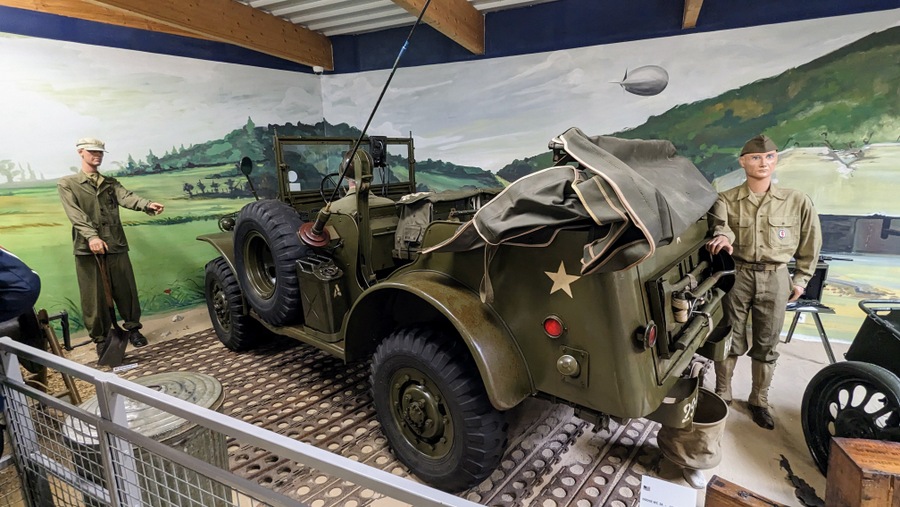
Given that the American vehicle manufacturer Studebaker made around 15,0000 M29 Weasel cargo carriers between 1943-45, you would expect to see them more often in WW2 museums. Oddly enough, though US-made and used chiefly by US forces, they were designed by a Brit, Geoffery Pyke, to be dropped by parachute into Norway for commando operations in snow. The museum signage suggests that this one may have been one of the first vehicles to drive onto Omaha Beach.
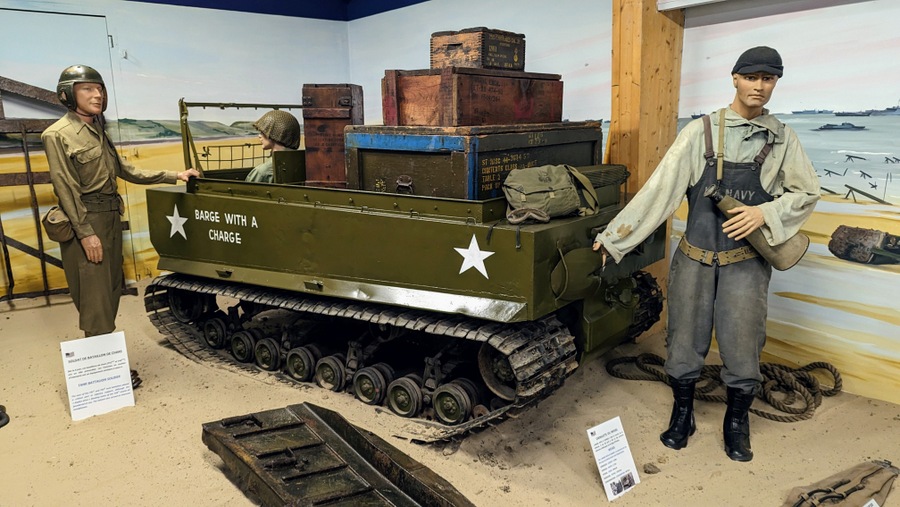

Another interesting vehicle is the elegant Fiat 500, aka ‘Topolino’ (“little mouse”) – at that time, one of the smallest cars in the world. The Fiat 500 later developed into that small box-shaped car that we all know, but its first models were a traditional shape… just small. They were made between 1936 – 1955 and these days they are not particularly rare, there are still plenty around. What is nice to see here, is one pressed into service with the German army in occupied France.
Coincidently, Fiat have just recently decided to reuse the ‘Topolino’ name for its new tiny urban electric vehicle.
Speaking of vehicles, it’s easy to forget that around 80% of the German Army in WW2 was horse-drawn, as it had been in WW1. Hitler, Goebbels and the military always sought to project the image of a modern mechanised army, which is why German photographs and film footage rarely show horses pulling carts and guns. One of the dioramas pays attention to that aspect by showing a farrier in his mobile workshop. Needless to say, there weren’t many/any farriers among the US service corps.
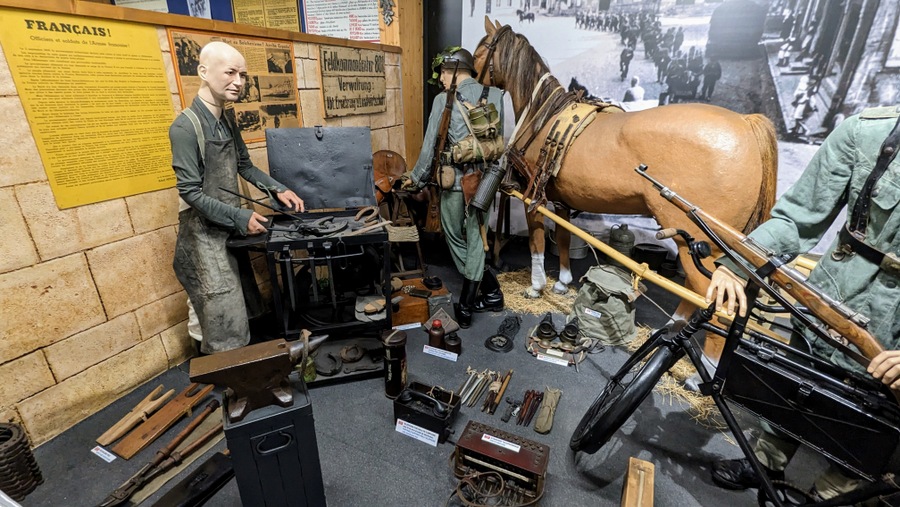
The other important aspect of the museum’s collection is its displays of photographs and documents. There are some fascinating images of the post-landings activity on Omaha.
One set of documents, relating to Operation Aquatint, particularly caught my eye.
Aquatint had nothing to do with D-Day. It was a shore raid by 62 Commando, known as the Small Scale Raiding Force (SSRF) in September 1942, and it all went badly wrong.
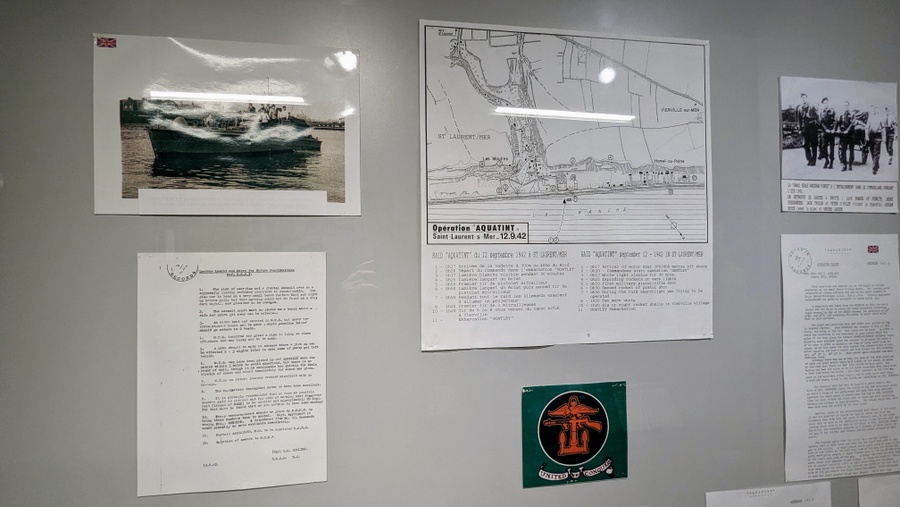
The plan was to take a small raiding party on a Motor Torpedo Boat (MTB) across the Channel to the little beach & hamlet of Sainte-Honorine-des-Pertes in a narrow gully just to the west of Port-en-Bessin in what was later to be the Gold beach sector. If you cast you mind back to the movie The Longest Day, it’s where Gert Frobe as a German soldier is delivering milk by donkey to the coastal bunkers when the Allied naval gunfire starts, and the Frenchman disdainfully watching him from his upstairs window starts enthusiastically waving his flag as the shells land. The house is still there by the way, but looking rather more modern these days!
Anyway, the mission was simply to make a note of the defences and capture a German sentry for later interrogation. Unfortunately, they made landfall in fog near Barfleur up on the Cotentin peninsula, and then motored back southeast until they reached what they thought was Sainte-Honorine-des-Pertes but was actually the Les Moulins draw in the middle of (later) Omaha Beach! There is a memorial plaque to the men of Operation Aquatint at the spot where they landed right next to the new stainless steel ‘Les Braves’ sculpture on the beach.

Almost as soon as the commandos landed, they were discovered. The alarm was raised and the shooting began. The MTB was fired on and damaged. It limped back out to sea leaving the 11 commandos ashore to be killed or captured.
The display at the Omaha Beach Memorial Museum has pages from the Operation Aquatint after action report, photographs, and a summary of “Lessons Learnt and Notes for Future Consideration” compiled by Sgt I.G. Collins. What brought me to a screeching halt when I read it was bullet point No. 8: “The navigation throughout seems to have been excellent”. WHAT?! Instead of the sleepy little beach 6¼ kms away, they had landed right in front of the Atlantic Wall strongpoint (Wn 68) under construction to defend the draw from a possible future invasion! How was that ‘excellent navigation’?
* A ravine or gully leading up from the beach. The three main draws from Omaha beach are the Colleville, Les Moulins (St Laurent) and Vierville draws.
Declaration: I was on a self-driving research trip with the (non-financial) support of the Normandie and Calvados tourist offices. Museum entry was complementary.
Factbox (2024)
Website:
Musée Mémorial d’Omaha Beach
Getting there: Avenue de la Libération
14710 Saint-Laurent-sur-Mer
Normandy
It’s on the Avenue de la Libération as you drive down (or up) from Saint Laurent to the beach. This can be a busy road in the summer with lots of passing traffic, so the museum can get busy and the car park, overwhelmed.
Entry Price:
| Individual | Group (10+) | |
|---|---|---|
| Adult | € 7.70 | € 4.90 |
| Child (7 – 15 yr) | € 4.50 | € 2.90 |
(6 yrs & under go free)
Opening Hours:
Open seven days a week from 12 Feb 2024
| Feb, Mar, Oct, Nov, Dec | 10:00 – 17:30 Daily (Last entry 16:30) |
| Apr, May, Sep | 09:30 – 18:30 Daily (Last entry 17:30) |
| Jun, Jul, Aug | 09:30 to 19:00 Daily (Last entry 18:00) |
| Closed: 24 & 25 Dec, and 30 Dec 2024 to 10 Feb 2025 | |

